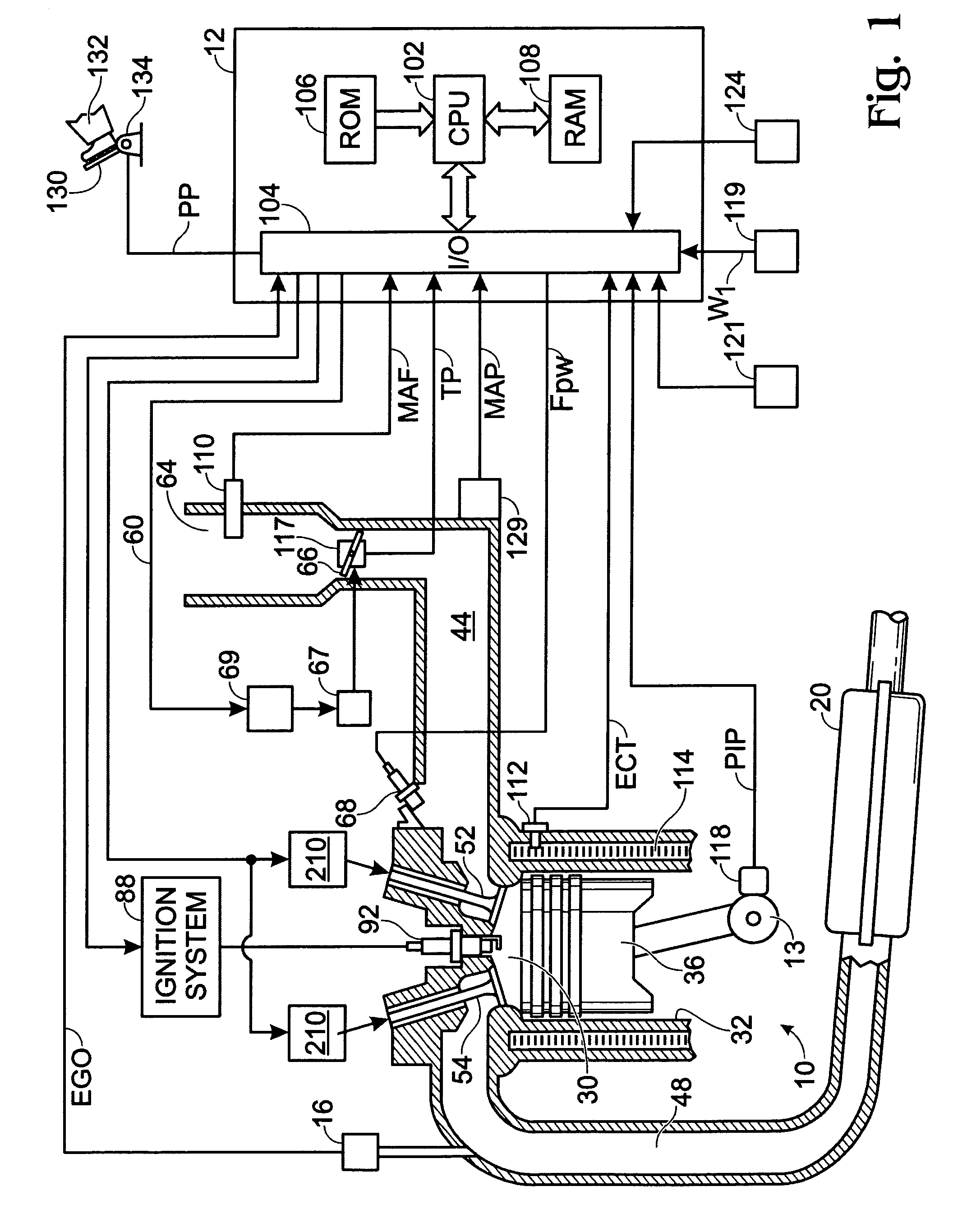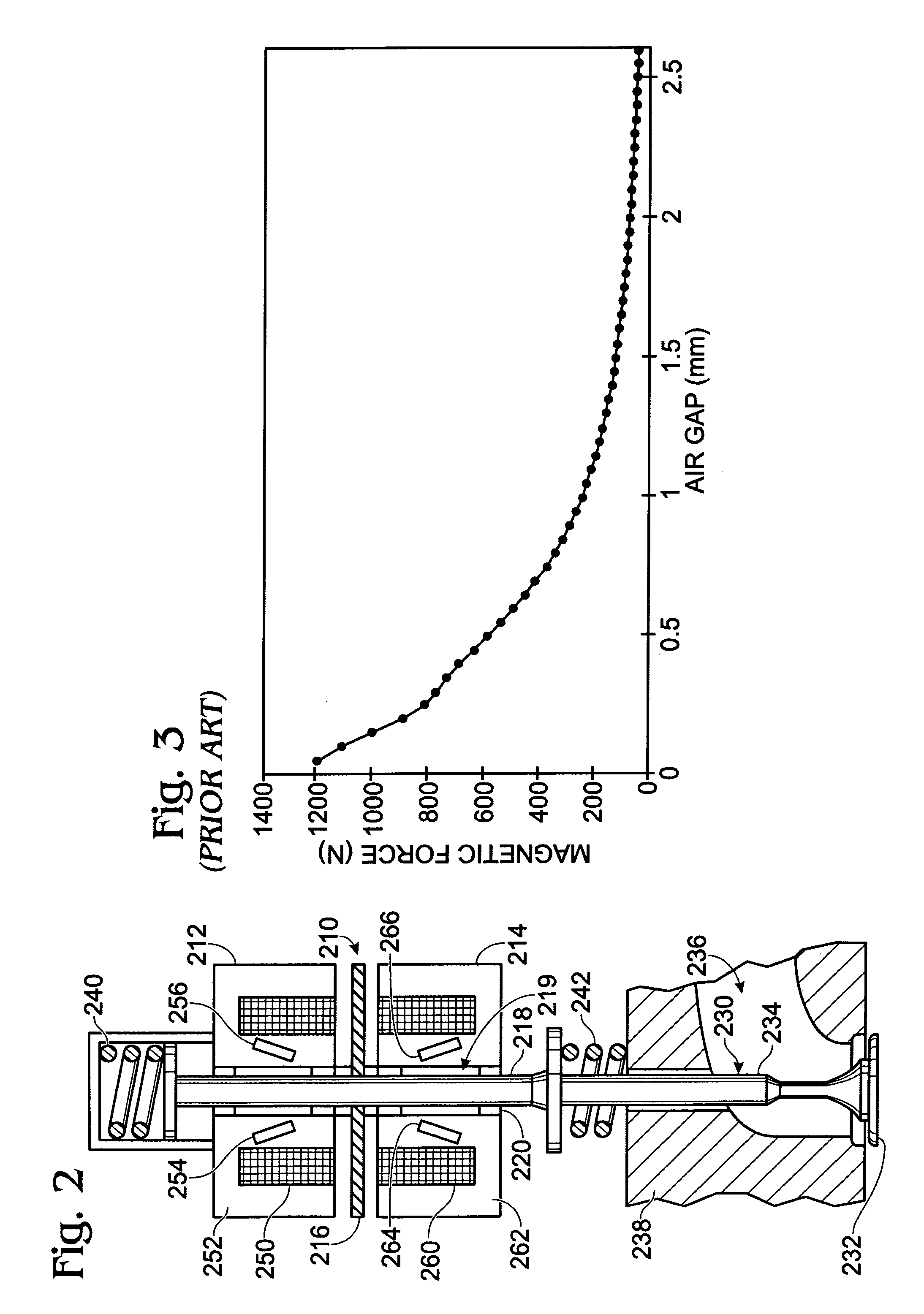Enhanced permanent magnet electromagnetic actuator for an electronic valve actuation system of an engine
a technology of electromagnetic actuator and permanent magnet, which is applied in the direction of machines/engines, non-mechanical valves, magnetic bodies, etc., can solve the problems of reducing engine peak power, difficult to accurately control the armature and/or seat landing speed, and creating noise and wear, etc., to achieve increased force output, reduce height requirements, and reduce resistance
- Summary
- Abstract
- Description
- Claims
- Application Information
AI Technical Summary
Benefits of technology
Problems solved by technology
Method used
Image
Examples
example a
[0112 shows recess 3870 at the outer edge of the side poles, which is similar to recess 3690 of FIG. 36. Example B shows recess 3872 at the interior edge of the side poles. Example C shows a combination of recesses 3872 and recess 3874 on the exterior edges of the center pole, while Example D shows only recess 3874 on the edges of the center pole. Example E shows recess 3876 in the center region on the armature end of the center pole, similar to recess 3680. Example F shows multiple recesses 3876 (three) evenly spaces along the armature end edge of the center pole. Example G shows multiple recesses 3876 (three), one placed in the center region on the armature end edge of each of the two side poles and the center pole. Example H shows multiple recesses 3878 in the shape of a rectangular notch at each corner of the armature edge of the poles and the coil cavity. Example I shows a half-circle shaped recess 3880 in the center region of the armature edge of the center pole. Recess 3880 c...
PUM
 Login to View More
Login to View More Abstract
Description
Claims
Application Information
 Login to View More
Login to View More - R&D
- Intellectual Property
- Life Sciences
- Materials
- Tech Scout
- Unparalleled Data Quality
- Higher Quality Content
- 60% Fewer Hallucinations
Browse by: Latest US Patents, China's latest patents, Technical Efficacy Thesaurus, Application Domain, Technology Topic, Popular Technical Reports.
© 2025 PatSnap. All rights reserved.Legal|Privacy policy|Modern Slavery Act Transparency Statement|Sitemap|About US| Contact US: help@patsnap.com



